#National Science Centre
Explore tagged Tumblr posts
Text
பத்தாம் வகுப்பு தேர்ச்சி போதும் | தேசிய அறிவியல் மையத்தில் பணியிடங்கள் வெளியாகியுள்ளன..!
பத்தாம் வகுப்பு தேர்ச்சி போதும் | தேசிய அறிவியல் மையத்தில் பணியிடங்கள் வெளியாகியுள்ளன..! #Freegovtjobs #jobrascals
தேசிய அறிவியல் மையத்தில் பின் வரும் Technician பணிகள் நிரப்புவதற்கான அறிவிப்பு வெளியாகியுள்ளன. மத்திய அரசு இந்த அதிகாரப்பூர்வ அறிவிப்பினை வெளியிட்டுள்ளது. தேசிய அறிவியல் மையம் பணிக்கு விண்ணப்பிக்க ஆர்வமுள்ளவர்கள் 23/11/2022 முதல் 12/12/2022க்குல் அஞ்சல் மூலமாக விண்ணப்பிக்கவும். இப்பணிக்கு விண்ணப்பிக்கும் நபர்கள் விண்ணப்பிக்கும் முன்பு கீழ்க்கண்ட கல்வித் தகுதி , வயது விவரம் , ஊதிய விவரம்…

View On WordPress
#delhi science museum#delhi science museum ticket#national science center#national science center delhi#national science centre#national science centre delhi#national science centre delhi ticket price#national science centre new delhi#national science museum#national science museum delhi#NSC Recruitment 2022 08 Office Assistant Posts#science museum#science museum delhi#science museum delhi complete information#science museum delhi complete tour#science museum delhi open#science museum delhi ticket price
0 notes
Text

0 notes
Text
Exploring the Wonders of Science: National Science Centre in Delhi
India, a land of rich cultural heritage and diversity, is also home to institutions that celebrate the wonders of science and technology. One such institution that stands as a testament to the nation's commitment to scientific advancement and education is the National Science Centre in Delhi. This remarkable establishment is a treasure trove of knowledge, a place where science comes alive, and where visitors of all ages can embark on a journey of discovery.
A Beacon of Knowledge
Located in the heart of Delhi, the National Science Centre is more than just a museum; it's a vibrant hub of scientific exploration and learning. Opened to the public in 1992, the center has since been a source of inspiration for students, educators, and science enthusiasts alike. It serves as a bridge between the academic world and the general public, making complex scientific concepts accessible to everyone.
Architectural Marvel
The National Science Centre is not only a center for knowledge but also a work of architectural brilliance. The eye-catching, spherical structure of the center is designed to resemble a huge, tilted lotus flower, symbolizing purity and enlightenment. The design itself sparks curiosity and sets the stage for the wonders that lie within.
Interactive Exhibits
One of the hallmarks of the National Science Centre is its interactive exhibits. Unlike traditional museums where visitors passively view displays, here, visitors can engage with the exhibits through hands-on activities and experiments. From physics and biology to space exploration and robotics, the center covers a vast array of scientific disciplines. It encourages visitors to touch, play, and learn, making it an ideal destination for students and families.
Educational Programs
In addition to its exhibits, the National Science Centre offers a wide range of educational programs. These programs are designed to inspire young minds, foster a love for science, and nurture the next generation of scientists and innovators. School groups frequently visit the center, benefitting from guided tours and workshops that complement their classroom learning.
Planetarium and 3D Theater
The center also boasts a state-of-the-art planetarium that takes visitors on breathtaking journeys through the cosmos. The immersive experience of watching stars, planets, and galaxies on the dome-shaped screen is both educational and awe-inspiring. Additionally, the 3D theater offers a unique cinematic experience that combines science and entertainment.
Science on Wheels
Recognizing the need to reach a wider audience, the National Science Centre operates a "Science on Wheels" program. This initiative involves mobile science exhibitions that travel to remote and underserved areas, bringing the excitement of science to communities that may not have easy access to such resources. It is a commendable effort to promote scientific awareness and literacy across the country.
Promoting Sustainability
The National Science Centre also emphasizes the importance of environmental conservation and sustainability. Through various exhibits and programs, it educates visitors about the urgent need to protect our planet and live in harmony with nature. This focus on sustainability aligns with the global effort to address climate change and environmental challenges.
Conclusion
The National Science Centre in Delhi stands as a beacon of knowledge, a symbol of scientific curiosity, and a testament to India's commitment to education and innovation. It is a place where the wonders of science come to life, where learning is not a passive activity but an exciting adventure. Whether you're a student, a teacher, a family, or simply a curious individual, a visit to the National Science Centre is sure to leave you with a deeper appreciation for the marvels of the natural world and the boundless possibilities of human ingenuity.
#delhidarshan#delhi#travel#delhi tourism#delhi darshan#delhi sightseeing#National Science Centre at Delhi
0 notes
Quote
The flow of digital information through fiber-optic cables lining the sea floor could be compromised by climate change. That's according to new research published in the journal Earth-Science Reviews by scientists from the United Kingdom’s National Oceanography Centre and the University of Central Florida. They found that ocean and nearshore disturbances caused by extreme weather events have exposed “hot spots” along the transglobal cable network, increasing the risk of internet outages.
Daniel Cusick, ‘Global Internet Connectivity Is at Risk from Climate Disasters’, Scientific American
#Scientific American#Daniel Cusick#fiber-optic cables#digital information#climate change#Earth-Science Reviews#United Kingdom#National Oceanography Centre#United States#University of Central Florida#ocean and nearshore disturbances#extreme weather events#transglobal cable network#internet outages
1 note
·
View note
Text

Happy birthday Alan Turing
Born on 23 June 1912, Alan was a pioneering figure in modern computer science. He worked during WWII in Britain’s codebreaking centre, playing a key role in cracking codes that helped the British in the fight against the Germans.
Alan was prosecuted for homosexuality in 1952, chemically castrated, and subsequently died by suicide in 1954. In 2009, British Prime Minister Gordon Brown formally apologised to Alan, saying, “On behalf of the British government, and all those who live freely thanks to Alan’s work I am very proud to say: we’re sorry, you deserved so much better.”
[Image source: National Portrait Gallery]
239 notes
·
View notes
Text
New COVID Variant XEC May Outpace Others This Fall - Published Sept 18, 2024
"The virus is always going to be mutating away from what it was in order to get more efficient at infecting individuals," Adalja said. "So I think this really highlights the fact that a universal COVID vaccine, or some vaccine with different technologies, perhaps a nasal vaccine and using mucosal immunity, all of those things are important."
What if, get this, we prevented covid cases by improving ventilation, mandating air filtration, and wearing masks in public? Wouldn't that accomplish the same goal right now? Every mutation takes us further away from the current scientific fantasy of a universal covid vaccine. We have to stop cases to make this dream a reality.
by Sophie Putka
The new COVID-19 variant XEC may overtake others in circulation to become dominant in the coming months, experts said, but will not prompt a meaningful change in symptoms or vaccine response.
So far, the CDC's variant proportions tracker has not registered enough cases of XEC in the U.S. to report it. (The agency's projected estimates for the 2 weeks ending in September 14 currently show KP.3.1.1 and KP.2.3 as the leading variants, with 52.7% and 12.2% of national cases, respectively.) Another estimate using data from the variant tracker GISAID has XEC at 1.11% of U.S. cases as of September 15, with around 48 sequences reported.
First detected in Germany in June, it's been found mostly in Central Europe, representing 10% of cases, according to the U.K.'s Science Media Centre.
"XEC represents a fairly minor evolution relative to the SARS-CoV-2 diversity currently in circulation, and is not a highly derived novel variant such as those that were granted Greek letters," like Alpha, Delta, and Omicron, Francois Balloux, PhD, a computational biologist at University College London and director of the UCL Genetics Institute, said in a Science Media Centre statement.
Experts noted that while XEC may have a small advantage in transmission, available vaccines are still likely to provide protection from serious illness.
XEC is a "recombinant variant of some of the other Omicron lineages that have been around for a while, and it does appear to be more immune evasive, giving it a transmissibility advantage in the population with the immunity that it has," Amesh Adalja, MD, of the Johns Hopkins Center for Health Security in Baltimore, told MedPage Today. "But it doesn't really change anything, just like the last variant didn't change anything, or the one before that, one before that, or the one before that."
Currently available COVID vaccines target slightly different subvariants. The updated mRNA shots aimed at KP.2 from Pfizer-BioNTech (Comirnaty) and Moderna (Spikevax), as well as Novavax's vaccine targeting the JN.1 variant lineage, are still protective against the most serious consequences of COVID infections, experts said.
"If this becomes a dominant variant, it will decrease the efficacy against infection of the updated vaccines, but the updated vaccines will still be durable against severe disease [and] hospitalization, and that's what is really the primary function of our current, first-generation COVID vaccines," Adalja said.
Still, he emphasized, the rapid mutation of the virus underscores a need for a different kind of vaccine than those currently available if the goal is to protect against infection rather than just severe disease.
"The virus is always going to be mutating away from what it was in order to get more efficient at infecting individuals," Adalja said. "So I think this really highlights the fact that a universal COVID vaccine, or some vaccine with different technologies, perhaps a nasal vaccine and using mucosal immunity, all of those things are important."
#mask up#covid#pandemic#covid 19#wear a mask#public health#coronavirus#sars cov 2#still coviding#wear a respirator
89 notes
·
View notes
Text
Finland seizes Russian state-owned property
Finland's National Enforcement Authority has begun seizing properties in Helsinki that belong to the Russian state. The agency operates under the remit of the Justice Ministry and is responsible for undertaking the state's statutory enforcement duties.
The seizure of the property is related to compensation claims made by the Ukrainian state-owned gas firm Naftogaz. Naftogaz has demanded more than five billion euros in compensation from Russia following the Kremlin's invasion of Crimea in 2014 and the firm's subsequent loss of gas reserves, pipelines, and warehouses in the Crimea region.
Full article by YLE
According to Helsingin Sanomat, 44 properties have been seized, most of them located in Helsinki. The seized properties include the Russian Centre of Science and Culture, an office building, four waterfront properties, and several limited liability housing shares.
According to Iltalehti, in Finland, Naftogaz are represented HPP Attorneys, pro bono.
"This is something that we feel is important and we want to play our part in helping Ukraine. We felt that this is a meaningful way for us to help."




Images via Iltalehti
#russia is a terrorist state#russian aggression#war in ukraine#russia's war on ukraine#stand with ukraine#ukraine#україна#russia#suomi#finland#helsinki#turku#siuntio#kirkkonummi#saltvik#ahvenanmaa#venäjä#*
42 notes
·
View notes
Text
Socialism: Utopian and Scientific - Part 7
[ First | Prev | Table of Contents | Next ]
1892 English Edition Introduction - 2
History (the role of Religion) in the English middle-class
When Europe emerged from the Middle Ages, the rising middle-class of the towns constituted its revolutionary element. It had conquered a recognized position within mediaeval feudal organization, but this position, also, had become too narrow for its expansive power. The development of the middle-class, the bourgeoisie, became incompatible with the maintenance of the feudal system; the feudal system, therefore, had to fall.
But the great international centre of feudalism was the Roman Catholic Church. It united the whole of feudalized Western Europe, in spite of all internal wars, into one grand political system, opposed as much to the schismatic Greeks as to the Mohammedan countries. It had organized its own hierarchy on the feudal model, and, lastly, it was itself by far the most powerful feudal lord, holding, as it did, fully 1/3rd of the soil of the Catholic world. Before profane feudalism could be successfully attacked in each country and in detail, this, its sacred central organization, had to be destroyed.
Moreover, parallel with the rise of the middle-class went on the great revival of science; astronomy, mechanics, physics, anatomy, physiology were again cultivated. And the bourgeoisie, for the development of its industrial production, required a science which ascertained the physical properties of natural objects and the modes of action of the forces of Nature. Now up to then science had but been the humble handmaid of the Church, had not been allowed to overlap the limits set by faith, and for that reason had been no science at all. Science rebelled against the Church; the bourgeoisie could not do without science, and, therefore, had to join in the rebellion.
The above, though touching but two of the points where the rising middle-class was bound to come into collision with the established religion, will be sufficient to show, first, that the class most directly interested in the struggle against the pretensions of the Roman Church was the bourgeoisie; and second, that every struggle against feudalism, at that time, had to take on a religious disguise, had to be directed against the Church in the first instance. But if the universities and the traders of the cities started the cry, it was sure to find, and did find, a strong echo in the masses of the country people, the peasants, who everywhere had to struggle for their very existence with their feudal lords, spiritual and temporal. The long fight of the bourgeoisie against feudalism culminated in three great, decisive battles.
The first was what is called the Protestant Reformation in Germany. The war cry raised against the Church, by Luther, was responded to by two insurrections of a political nature; first, that of the lower nobility under Franz von Sickingen (1523), then the great Peasants' War, 1525. Both were defeated, chiefly in consequence of the indecision of the parties most interested, the burghers of the towns – an indecision into the causes of which we cannot here enter. From that moment, the struggle degenerated into a fight between the local princes and the central power, and ended by blotting out Germany, for 200 years, from the politically active nations of Europe. The Lutheran Reformation produced a new creed indeed, a religion adapted to absolute monarchy. No sooner were the peasant of North-east Germany converted to Lutheranism than they were from freemen reduced to serfs.
But where Luther failed, Calvin won the day. Calvin's creed was one fit for the boldest of the bourgeoisie of his time. His predestination doctrine was the religious expression of the fact that in the commercial world of competition success or failure does not depend upon a man's activity or cleverness, but upon circumstances uncontrollable by him. It is not of him that willeth or of him that runneth, but of the mercy of unknown superior economic powers; and this was especially true at a period of economic revolution, when all old commercial routes and centres were replaced by new ones, when India and America were opened to the world, and when even the most sacred economic articles of faith – the value of gold and silver – began to totter and to break down. Calvin's church constitution of God was republicanized, could the kingdoms of this world remains subject to monarchs, bishops, and lords? While German Lutheranism became a willing tool in the hands of princes, Calvinism founded a republic in Holland, and active republican parties in England, and, above all, Scotland.
[ First | Prev | Table of Contents | Next ]
43 notes
·
View notes
Text

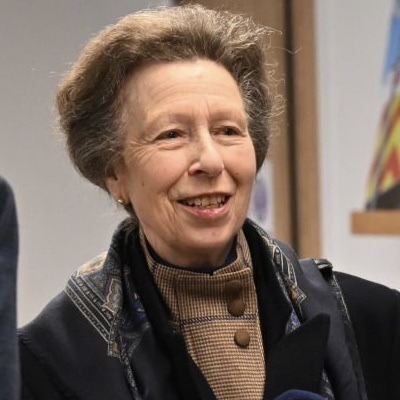
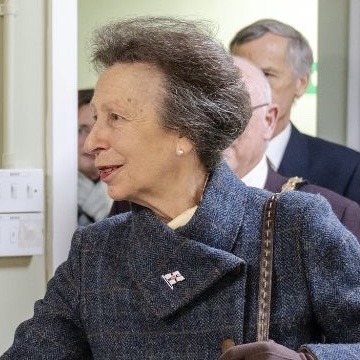
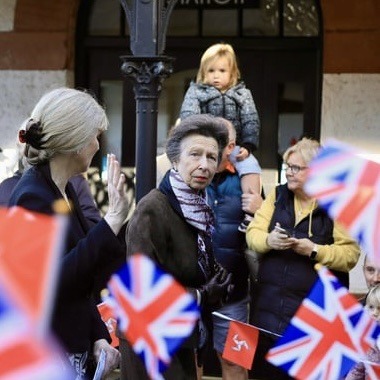
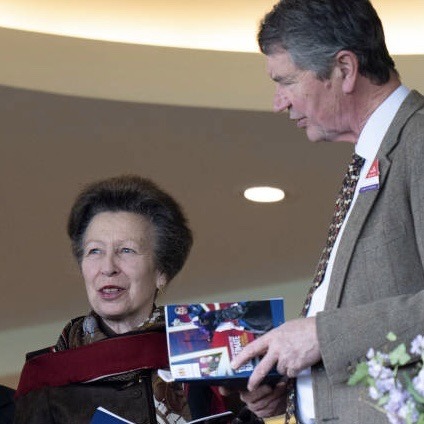
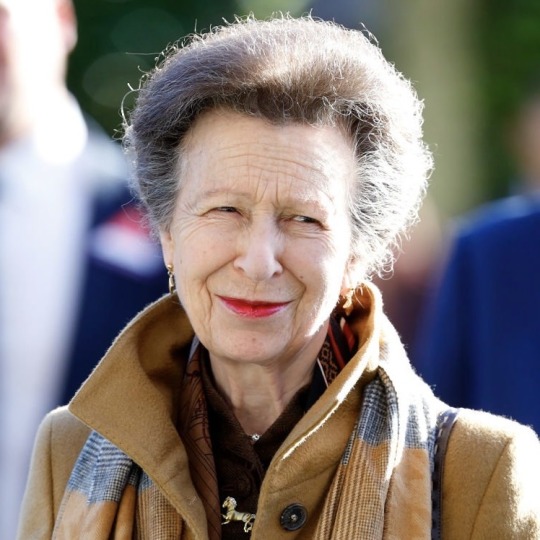

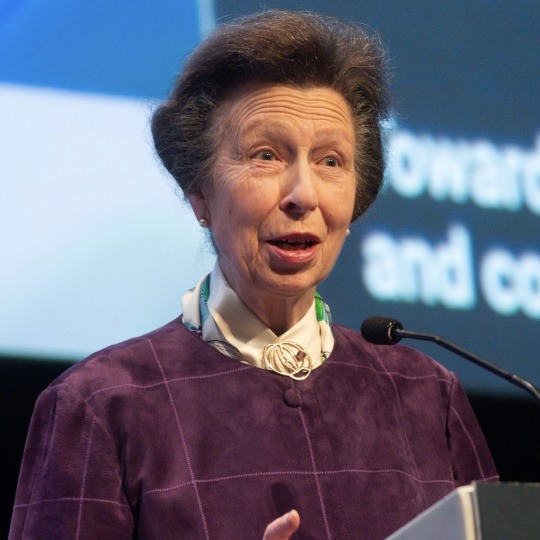

The Princess Royal’s Official Engagements in October 2024
01/10 As Court Member of the Fishmongers’ Company, visited a Food Technology Class at Bingley Grammar School. 🐟🏫
As President of the UK Fashion and Textile Association, visited SIL Group’s Fibre Processing Mill at Ladywell Mills in Bradford. 🧵🧣
Visited Viking Arms Limited in Harrogate. ⚔️🏹🗡️
02/10 Visited Blackburn Meadows Bio-Mass Power Plant in Tinsley, Sheffield. 🍃🔋
Visited Sheffield Forgemasters. 🔥⚒️
Visited Loadhog at the Hog Works. 🚛🚚
Opened the University of Sheffield’s Gene Therapy Innovation and Manufacturing Centre. 🧬
03/10 As President of Carers Trust, attended the Short Breaks Wales Conference at Sophia Gardens Cricket Ground in Cardiff. 🦽🏴
As Colonel of The Blues and Royals (Royal Horse Guards and 1st Dragoons), attended the Annual Dinner at the Mandarin Oriental Hyde Park Hotel in Knightsbridge, London. 💂🍽️
04/10 As Vice Patron of the British Horse Society attended the Changing Lives Through Horses Forum at Saddlers' Hall in London. 🐎
08/10 As President of the Royal Yachting Association, opened Warsash Sailing Club’s renovated Clubhouse. ⛵️🍾
As Patron of Catch22, visited the Orion Centre in Havant, Hampshire. 🫂
Sir Tim represented Princess Anne at the Memorial Service for Mrs Julia Rausing (Philanthropist) which was held in St James’s Church in London. ⛪️
09/10 Attended the Annual National Service for Seafarers in St. Paul's Cathedral. ⛪️⚓️
10/10 As Patron of the Royal College of Emergency Medicine, attended the Annual Scientific Conference at the Glasshouse International Centre for Music in Gateshead. 💊
As Patron of the Butler Trust, visited North Tyneside Youth Justice System in North Shields. 🔗
Opened a renovated manufacturing facility in North Shields. 🏢
11/10 As Admiral of the Sea Cadet Corps, Marine Society and Sea Cadets, opened Midlands Boat Station in Birmingham. 🫡⛵️
As Chancellor of Harper Adams University, opened the Digital Learning Hub at the Quad in Telford. 🖥️💻🎮
As Patron of YSS Limited, visited the Criminal Justice Service at the Shropshire Golf Centre in Telford. 👩⚖️
14/10 As Guardian of Give Them A Sporting Chance and the Chaffinch Trust, held Management Board and Team Meetings at Gatcombe Park. 💼
15/10 With Sir Tim as Royal Patron of the Motor Neurone Disease Association, attended the “Countdown to Cure” Reception at the Royal College of Nursing in London. 💊
With Sir Tim As Patron of the Remembrance Trust, attended a Dinner at the Beefsteak Club in London. 🌹
16/10 As Royal Patron of the Security Institute, attended the Annual Conference at the Royal Society of Medicine. 🚨🔒
As Master of the Corporation of Trinity House, attended a Civic Luncheon at Trinity House. 🍽️
As Royal Patron of WISE, attended the Annual Conference at IET London: Savoy Place. 🧩
17/10 As Patron of the Cathedral Church of Saint German Peel Development Appeal attended a Thanksgiving Service in St German’s Cathedral, Peel, Isle of Man. 🇮🇲⛪️
Visited the Manx National Heritage “All at Sea” Exhibition at the House of Manannan in Peel, Isle of Man. 🇮🇲 🌊
As Grand Master of the Royal Victorian Order, attended Evensong and a Reception at The King’s Chapel of the Savoy in London. ⛪️🍾
As President of the Royal Society for the encouragement of Arts, Manufactures and Commerce, attended a Reception to mark the 250th Anniversary of RSA House. 🎂
Unofficial Sir Tim, as Chair of the Board of Trustees of the Science Museum Group, attended the launch of the Manchester Science Festival at the Science and Industry Museum in Manchester. 🧪🧬🔭
18/10 On behalf of The King, held an Investiture at Buckingham Palace. 🎖️
Attended a performance by the Spanish Riding School of Vienna at OVO Arena in Wembley. 🇦🇹🇪🇸🐎
19/10 With Sir Tim Attended British Champions Day at Ascot Racecourse. 🏆🐎
22/10 As Master of the Corporation of Trinity House, chaired the Quarterly Meeting of the Court and attended a Luncheon at Trinity House. 💼
As Patron of UK Coaching, held a Reception at Buckingham Palace to celebrate Olympic and Paralympic Coaching. 🇬🇧🏅
23/10 Attended a Bicentenary Commemorative Service to recognise the Scottish Fire and Rescue Service in St Giles’ Cathedral, Edinburgh. 🚒🧯👨🚒
As Royal Patron of Leuchie Forever Fund, held a Benefactors’ Dinner at the Palace of Holyroodhouse. 🍽️
24/10 Re-opened the Rowan Glen Factory at Palnure, near Newton Stewart. 🍶
As Patron of the Royal College of Occupational Therapists, opened the new wing at West Cumberland Hospital in Whitehaven. 🏥
With Sir Tim As Patron of the Royal Navy and Royal Marines Charity, attended the Trafalgar Night Dinner at the Old Royal Naval College in Greenwich. ⚓️🫡🍽️
25/10 Opened the British Standards Institution International Electrotechnical Commission Annual Meeting at the Edinburgh International Conference Centre. 🏴🔋
28/10 Attended the Prison Advice and Care Trust’s 125th Anniversary National Volunteer Awards at St John’s Church in London. 🏆
29/10 On behalf of The King, held morning and afternoon investitures at Windsor Castle.🎖️
31/10 Visited the Robotic Surgery Unit at Musgrove Park Hospital in Taunton. 🤖🏥
Attended a Reception for the Pride of Somerset Youth Awards winners at Bridgwater and Taunton College. 🏆
Was installed as Chancellor of Health Sciences University before launching the University in Bournemouth. 🎓
As Patron of Save the Children UK, attended the Autumn in the City Dinner at the Savoy in London. 🍽️
Total official engagements for Anne in September: 58
2024 total so far: 371
Total official engagements accompanied/represented by Tim in September: 5
2024 total so far: 91
FYl - due to certain royal family members being off ill/in recovery I won't be posting everyone's engagement counts out of respect, I am continuing to count them and release the totals at the end of the year.
#it’s that time of the month again kids#princess anne#princess royal#tim laurence#timothy laurence#court circular#october 2024#aimees unofficial engagement count 2024
41 notes
·
View notes
Text
By: Louise Perry
Published: Jun 8, 2023
When we get home from the supermarket, our two-year-old likes to assist with taking the groceries out from underneath his stroller and carrying them to the kitchen. He will pick up a carton of milk and heave it towards the fridge like an atlas stone. “Well done darling” I say to him in a pitch slightly higher than usual, “you’re being so helpful.”
Of course he isn’t actually being helpful. In fact, he’s slowing down the process of unpacking and risking an enormous milk spillage all over the kitchen floor. But my goal is encouragement and kindness – he’s only two, bless him, and that carton is awfully big and heavy.
My husband regards these exercises with more of a gentle briskness. “Thanks mate” he’ll say in his usual tone of voice, excising my white lie. In this, I’ve learnt, my husband is typical of other men. In a 2015 study��led by Mark VanDam, a professor in the Speech and Hearing Sciences department at Washington State University Spokane, researchers outfitted preschoolers and their parents with recording devices to monitor social interactions over the course of a normal day. The mothers, they found:
… used higher pitch and varied their pitch more when interacting with their child than with adults. The fathers, on the other hand, did not show the same pattern, and instead talked to their children using intonation patterns more like when they talked to other adults.
As an instinctive speaker of so-called ‘motherese’ – that is, baby talk – I find that when our son mispronounces a word (‘tawtah’ for ‘water’ or ‘mulack’ for ‘milk’) I will automatically echo it back to him, while my husband will automatically respond with the correct pronunciation. These differences persist despite the fact that we share childcare almost exactly equally within our family.
It turns out we’re not alone in this sex difference, and that it may well have some adaptive purpose. "We think that maybe fathers are doing things that are conducive to their children's learning but in a different way,” writes VanDam, “the parents are complementary to their children's language learning.” Mothers speak down to children, while fathers speak to them like equals – in combination, these two kinds of stimuli promote the development of adult language.
The adoption of motherese is an instinct that, in its correct context, is both comforting and developmentally useful. But it can also, in some circumstances, be dysfunctional. And, as I have become more and more fluent in it, I have started to notice that motherese is no longer confined to the nursery or the classroom, but is now to be found also in public life. Not in its full expression – “have you got a boo-boo, honey?” – but in a more subtle form.
I heard a lot of motherese, for instance, in the responses to philosopher Kathleen Stock’s appearance this week at the Oxford Union – a political event considered significant enough to attract commentary from the Prime Minister and rolling updates on the homepages of several national newspapers.
Students at risk of being traumatised by Stock’s mild-mannered, centre-left brand of politics were ushered towards ‘welfare rooms’ offering ear plugs, bottles of water, and snacks. “The Union has made the choice to amplify a voice that actively harms trans students, trans people and the trans community at large” wrote one student politician, “we’re tired of [the Union’s] refusal to listen to the communities they hurt” insisted another. It was as if Stock was a rampaging bully on the playground, knocking other children to the ground, and her critics were leaping to the defence of the persecuted toddlers.
Witnessing the backlash against her, you’d never guess that Stock’s only sin is to offer a careful academic critique of the doctrine of gender identity – that is, the claim that one can become a member of the opposite sex (or some other identity category in between) merely by force of will. As she reiterated in her Oxford Union speech, to reject this doctrine is not to deny the humanity of trans people, but rather to balance their interests against those of other people, particularly women.
But I am by no means the first to notice an unexpected feature of the crowds that formed outside the Oxford Union this week, and indeed all of the crowds that congregate in support of trans activism (now a regular occurrence, and not just in the Anglosphere). While the occasional acts of outright aggression are overwhelmingly committed by men, the crowds in general are mostly composed of young women.
Polling reveals this to be a wider pattern. In the UK, women – and particularly young women – are far more supportive of trans activism than are their male counterparts. The same gap can be seen in US polling. The public figures who have received the most flak for their criticisms of trans activism are disproportionately women – I’m thinking not only of Kathleen Stock, but also of JK Rowling – and yet so, too, are the movement’s most devoted allies. This is, in the main, an intra-female conflict.
But if trans activism poses a threat to women’s interests – as Stock and Rowling insist that it does – then why have so many women come out in support of it? I want to propose two explanations for this seeming paradox.
Firstly, in socioeconomic terms, the women who have the most to lose from the disintegration of female-only spaces – prisoners and domestic abuse victims, for instance – are not actually the same women who are draping themselves in blue and pink flags outside the Oxford Union. This is a textbook example of what Rob Henderson has termed a ‘luxury belief’ – an idea that confers status on the rich, while causing harm to the poor.
But then I am begging the question, because why on earth would trans activism confer status on the rich, or indeed anyone? This is where we come to the second factor: the extraordinarily well-documented differences in personality that have been observed between male and female populations cross-culturally.
Note that there is a crucial distinction to be drawn between average and absolute differences. It is not true that all men or all women exhibit only masculine or feminine personality traits, in the same way that not all women are short and not all men are tall – rather, average differences between the sexes are obvious only at the population level.
One trait on which men and women differ substantially is agreeableness. To put it bluntly, women are usually nicer than men – that is, they are “more nurturing, tenderminded, and altruistic more often and to a greater extent than men,” as psychologist Professor Yanna Weisberg puts it.
This nurturing instinct often finds its way into polling on political questions. For instance, a typical study from 2017 asked 3,014 college students the following question: “If you had to choose, which do you think is more important, a diverse and inclusive society or protecting free speech rights.” 61% of male students chose to prioritise free speech, compared with only 35% of female students – exactly what you would expect from two populations that differ in this most crucial of traits.
Don’t think that I’m bashing agreeableness per se – it’s one of those personality traits that really does offer advantages and disadvantages all along the spectrum. Disagreeable people are often rude, but they can also be refreshingly honest; agreeable people are often pleasant, but they are easily taken advantage of. Think of agreeableness as motherese: soothing and lovely in the right circumstances, cloying and foolish in the wrong ones.
The problems arise when an agreeable style of politics gloms onto a group that seems to offer plentiful opportunities for babying. Right now, it is trans people who have found themselves in the hot seat (or the high chair). For just one example of this babying tendency in action, observe the progressive response when then-66 year old Caitlyn Jenner came out as trans (a response parodied exquisitely in a South Park episode titled ‘Stunning and Brave’). When Glamour honoured Jenner as the magazine’s 2015’ Woman of the Year' – despite the fact that Jenner had not yet lived as a woman for a full year – I couldn’t help but hear the high pitched notes of motherese (“you look so pretty sweetie”, “well done that was very brave.”)
Observe, too, the trans celebrity Dylan Mulvaney’s recent appearance on Drew Barrymore’s talkshow, which culminated with Barrymore kneeling on the ground, looking Mulvaney straight in the eye, and offering a heartfelt pep talk on self-love. Some gender critical feminists looked at this scene and saw a woman prostrating herself before a man. What I saw was a mother kneeling down to reassure a young child – for some bizarre reason, Barrymore was speaking motherese to a grown adult on national TV.
At the risk of stating the obvious, trans people are not babies. Nor are they pets. They do not need earplugs and snacks to withstand an academic discussion, and they do not need to be spoken to like toddlers. Real two-year-olds may benefit from the gentleness of motherese. The rest of us need to grow up.
==
https://policyexchange.org.uk/wp-content/uploads/2022/11/The-Politics-of-the-Culture-Wars-in-Contemporary-Britain.pdf#page=57
Women are more likely than men to say a trans women should be able to enter a women’s refuge, favouring this by a 36-32 margin while men oppose it 40 to 30. In fact, across all 6 questions pertaining to the trans issue (Stock, Rowling, refuges, gender identity, pronouns, teaching biological sex), women are significantly more supportive of the trans rights position even when ideology is taken into account. Women even exceed LGBT identifiers in their support for the pro-trans position on many questions.
Why? Is this not against the female interest? The likely answer is that women are more likely to be cultural leftists than men across most of the 25 attitudinal items in the survey. The inclination to empathise and care for groups perceived as vulnerable best accounts for the pattern. The result of the empathy dynamic is that the gender-critical feminist position, while intellectually prominent, is still a contested view among women. Indeed, the largest source of opposition to greater trans access to women’s spaces comes from cultural conservatives.
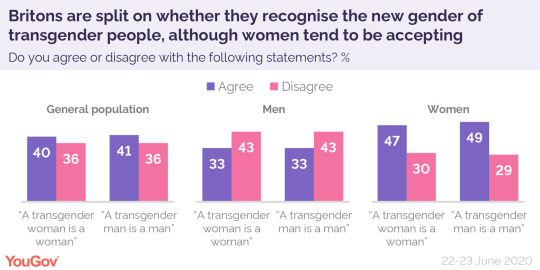
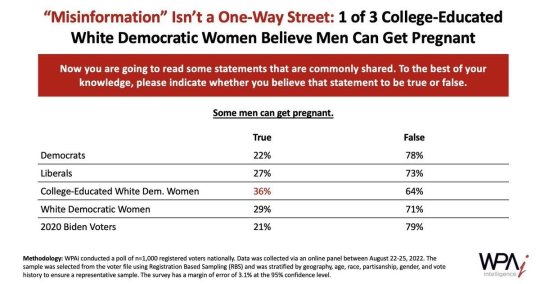
This isn't a war between men and women, as some would like to assert.
It's really a war between different denominations of feminism. Like Catholicism vs Protestantism. Or Sunni vs Shi'a Islam.
One thing that's hilarious and worth pointing out: gender-critical feminists will sometimes say things along the lines of, well that agreeableness was socialized into women by "the patriarchy" to make them compliant. Which means they're denying the same evolved sex-based differences that they started off defending. Like claiming to be a Catholic while denying transubstantiation.
Either sex-differences are real, and can explain different participation rates in physics and kindergarten teaching, different career priorities and trajectories (and thus, the mythical "pay gap") and different work patterns as readily as they explain differences in swimming, cycling and weight-lifting performance, making "the patriarchy" as unnecessary as a god is to the existence of the universe... or they're not, and the gender-critical argument goes up in smoke in the flames of social constructivism. God can't be both good and unknowable.
#Louise Perry#stunning and brave#gender activism#gender ideology#queer theory#genderwang#motherese#infantilization#mothering#western feminism#sex based differences#sex differences#religion is a mental illness
165 notes
·
View notes
Note
While I feel that hws France is hard to portray I do wonder what headcanons you have for him. Care to tell a few that come to mind?
a lot of my headcanons of francis/françois are from the british imperial + sea/east asian perspective, so with that in mind, these are some thoughts i've had:
a. françois' strengths are that he can be very charming and good at putting people at ease. he is somebody, if you ran into him somewhere, just comes off as a really interesting person. he can talk for ages about his passion for philosophy, art, literature, science and cooking without it getting boring to the listener.
b. he can be a really good lover too and is that sort of person who considers it a point of pride to make his partners enjoy his company. the sort of person who will make dinner and probably also a good breakfast for you. but one of his flaws is that he can also be pretty self-centred at times, and sometimes he uses his charisma to get out of things or simply dodge issues in his personal relationships.
c. françois, much like arthur, is in the Bad Parent club vis a vis matthew in the 17—18th centuries. where they differ however, is i feel that arthur was controlling but more...present, whereas françois was more...dismissive. matthew would get letters from arthur instructing him to do this and that, which for matthew at least acknowledged him, whereas françois might just not even write to him much at all, especially after matthew came under arthur's control.
d. françois really clicked with alfred during the revolutionary war. it helped that alfred was punching arthur in the dick, but i think that françois for all his flaws, genuinely possesses a somewhat more idealistic streak (than say, arthur imo) so that gelled well with alfred spouting all kinds of enlightenment thoughts (especially since he was also reading french writers like Montesquieu).
e. françois and lien (vietnam) have a complicated (to say the least) relationship due to the history of french imperialism over vietnam; i see francis being much younger than her (she and yao are peers in age!), so lien fitted him very much into her prior experience as an older female nation being forced to deal with 'boys playing at being empires'. lien probably shot him in the face at least once during the first indochina war, that tried to re-establish colonial rule over vietnam in the 1950s. however, i do think they can talk more cordially in more recent decades, with normalisation of ties. cooking is perhaps one topic that is a common interest—vietnamese banh mi is a kind of sandwich originating from french baguettes that incorporates local ingredients, and it's a really tasty and popular streetfood. there's also a big french-vietnamese population in paris today.
f. kiku was absolutely not impressed by monet's la japonaise, nor 'madame chrysanthème', the wildly racist and orientalist mess that Madame Butterfly was based on. it was exoticising, not flattering to him—he was however, more amenable to those of françois' artists that incorporated japanese artistic techniques in more genuine ways, or with françois' own view of aesthetics and his knowledge and interest in engineering.
g. yao, much like kiku later, was someone françois was very interested in culturally—as seen from the boom in chinoiserie when trade with china began back in the 17th century. i think french is probably one of the first european languages yao learns (besides portuguese). it's a fairly functional trading relationship—until of course, french imperialist interests began expanding in yao's sphere of influence and the opium wars.
h. i'm a fruk fan so naturally i think his love-hate relationship with arthur is one of his most significant r/ships—arthur has been a neighbour, friend, enemy, lover and everything in between. but! scotfra is another very, very long-term relationship important to him (auld alliance!). also on an EU level well, there's him and ludwig too.
i. naturally, he's also fairly fashionable, and i feel like he'll always eye himself critically even if he's going out casually, compared to way i can see arthur being fairly chill about strolling out in that questionable, ill-fitting acid green christmas sweater alfred sent him as a joke once. i also think françois probably smokes a fair bit, compared to how arthur's gotten a kick in the arse to cut back after WWII. and nowadays, he'll often just be relaxing with a cigarette on the balcony of his apartment with a book, or enjoying a day out in one of his museums.
#hws france#hetalia#hws england#hws canada#hws vietnam#hws china#hws japan#hws scotland#hetalia headcanons
123 notes
·
View notes
Text
African countries are being forced to spend billions of dollars a year coping with the effects of the climate crisis, which is diverting potential investment from schools and hospitals and threatens to drive countries into ever deeper poverty.
Dealing with extreme weather is costing close to 6% of GDP in Ethiopia alone, equating to a spend of more than $1 repairing climate damage for every $20 of national income, according to research by the thinktank Power Shift Africa.
The warning comes just before the major new scientific report from the global authority on climate science, the Intergovernmental Panel on Climate Change. This report, the second part of the IPCC’s comprehensive summary of global climate science, will set out the consequences of climate breakdown across the world, looking at the floods, droughts, heatwaves and storms that are affecting food systems, water supplies and infrastructure. As global temperatures have risen in recent decades, and as the impact of extreme weather has become more apparent around the world, efforts to make infrastructure and communities more resilient have largely stalled.
Africa will be one of the worst-hit regions, despite having done least to cause the climate crisis. According to the Power Shift Africa study, titled Adapt or Die: An analysis of African climate adaptation strategies, African countries will spend an average of 4% of GDP on adapting to climate breakdown.
These countries include some of the world’s poorest people, whose responsibility for greenhouse gas emissions is many times less than those of people in developed countries, or in large emerging economies such as China. Sierra Leone will have to spend $90m a year on adapting to the climate crisis, though its citizens are responsible for about 0.2 tonnes of carbon dioxide emissions a year each, while US citizens generate about 80 times more.
Mohamed Adow, director of Power Shift Africa, said: “This report shows the deep injustice of the climate emergency. Some of the poorest countries in the world are having to use scarce resources to adapt to a crisis not of their making. Despite only having tiny carbon footprints compared with those of the rich world, these African countries are suffering from droughts, storms and floods which are putting already stretched public finances under strain and limiting their ability to tackle other problems.”
He called for more funding from developed countries, which promised at the Cop26 UN climate summit to double the money available to help poor countries adapt to the climate crisis. Rich countries promised in 2009 to provide $100bn a year to help poor countries cut their greenhouse gas emissions and cope with the effects of climate breakdown. But so far they have fallen short of that target, and most of the funds that have been provided have gone to projects to cut emissions, such as windfarms and solar panels, rather than efforts to help countries adapt.
The study examined national adaptation plans submitted to the UN by seven African countries: Ethiopia, Kenya, Liberia, Sierra Leone, South Africa, South Sudan and Togo. South Sudan, which is the world’s second poorest country, was hit by floods last year that displaced 850,000 people, and led to outbreaks of water-borne diseases. The country is to spend $376m a year on adaptation, about 3.1% of its GDP.
Chukwumerije Okereke, director of the centre for climate change and development at the Alex Ekwueme Federal University in Nigeria, said rich countries must respond to the findings, and to the IPCC report.
“It is both irresponsible and immoral for those that are the chief cause of climate change to look on while Africa, which has contributed next to nothing to climate change, continues to bear a disproportionate share of the impact,” he said. “The time for warm words is long gone. We need urgent, scaled-up, long-term support from the world-leading climate polluters.”
— African countries spending billions to cope with climate crisis
#fiona harvey#current events#climate change#global warming#climate justice#economics#international relations#poverty#ethiopia#sierra leone#kenya#liberia#south africa#south sudan#togo#mohammed adow#chukwumerije okereke
963 notes
·
View notes
Text
My Grimoire Research Library
this is a list of my major resource I've referenced/am currently referencing in my big grimoire project. For books I'll be linking the Goodreads page, for pdfs, websites and videos i'll link them directly.
There are plenty of generalised practitioner resources that can work for everyone but as I have Irish ancestry and worship Hellenic deities quite a few of my resources are centred around Celtic Ireland, ancient Greece and the Olympic mythos. If you follow other sects of paganism you are more than welcome to reblog with your own list of resources.
Parts of my grimoire discuss topics of new age spiritualism, dangerous conspiracy theories, and bigotry in witchcraft so some resources in this list focus on that.
Books
Apollodorus - The Library of Greek Mythology
Astrea Taylor - Intuitive Witchcraft
Dee Dee Chainey & Willow Winsham - Treasury of Folklore: Woodlands and Forests
John Ferguson - Among The Gods: An Archaeological Exploration of Ancient Greek Religion
Katharine Briggs - The Fairies in Tradition and Literature
Kevin Danaher - The Year in Ireland: Irish Calendar Customs
Laura O'Brien - Fairy Faith in Ireland
Lindsey C. Watson - Magic in Ancient Greece and Rome
Nicholas Culpeper - Culpeper's Complete Herbal
Plutarch - The Rise and Fall of Athens: Nine Greek Lives
R.B. Parkinson - A Little Gay History: Desire and Diversity Around the World
Rachel Patterson - Seventy Eight Degrees of Wisdom: A Tarot Journey to Self-Awareness
Raleigh Briggs - Make Your Place: Affordable & Sustainable Nesting Skills
Robin Wall Kimmerer - Braiding Sweetgrass
Ronald Hutton - The Witch: A History of Fear in Ancient Times
Rosemary Ellen Guiley - The Encyclopaedia of Witches and Witchcraft
Thomas N. Mitchell - Athens: A History of the World's First Democracy
Walter Stephens - Demon Lovers: Witchcraft S3x and the Crisis of Belief
Yvonne P. Chireau - Black Magic: Religion and The African American Conjuring Tradition
PDFs
Anti Defamation League - Hate on Display: Hate Symbols Database
Brandy Williams - White Light, Black Magic: Racism in Esoteric Thought
Cambridge SU Women’s Campaign - How to Spot TERF Ideology 2.0.
Blogs and Websites
Anti Defamation League
B. Ricardo Brown - Until Darwin: Science and the Origins of Race
Dr. S. Deacon Ritterbush - Dr Beachcomb
Folklore Thursday
Freedom of Mind Resource Centre - Steven Hassan’s BITE Model of Authoritarian Control
Institute for Strategic Dialogue
Royal Horticultural Society
The Duchas Project -National Folklore Collection
Vivienne Mackie - Vivscelticconnections
YouTube Videos
ContraPoints - Gender Critical
Emma Thorne Videos - Christian Fundie Says Halloween is SATANIC!
Owen Morgan (Telltale) - The Source Of All Conspiracies: A 1902 Document Called "The Protocols"
The Belief it or Not Podcast - Ep. 40 Satanic Panic, Ep 92. Wicca
Wendigoon - The Conspiracy Theory Iceberg
Other videos I haven't referenced but you may still want to check out
Atun-Shei Films - Ancient Aryans: The History of Crackpot N@zi Archaeology
Belief It Or Not - Ep. 90 - Logical Fallacies
Dragon Talisman - Tarot Documentary (A re-upload of the 1997 documentary Strictly Supernatural: Tarot and Astrology)
Lindsay Ellis - Tracing the Roots of Pop Culture Transphobia
Overly Sarcastic Productions - Miscellaneous Myths Playlist
Owen Morgan (Telltale) - SATANIC PANIC! 90s Video Slanders Satanists | Pagan Invasion Saga | Part 1
ReignBot - How Ouija Boards Became "Evil" | Obscura Archive Ep. 2
Ryan Beard - Demi Lovato Promoted a R4cist Lizard Cult
Super Eyepatch Wolf - The Bizarre World of Fake Psychics, Faith Healers and Mediums
Weird Reads with Emily Louise -The Infamous Hoaxes Iceberg Playlist
Wendigoon - The True Stories of the Warren Hauntings: The Conjuring, Annabelle, Amityville, and Other Encounters
#I'm writing this while watching the new SovietWomble video#good way to spend 3 hours#witchblr#witch#witchcraft#pagan#pagan witch#kitchen witch#paganism#hellenic pagan#hellenic witch#grimoire#digital grimoire#book of magic#grimoire resources#witchcraft resources#resource list#witch masterpost#eclectic pagan#witchy#grimoire tips#grimoire inspo#grimoire inspiration
359 notes
·
View notes
Text
a novel method for Gini!
According to Nature, researchers at the University of Hull in the U.K. used the CAS system—a method used by astronomers that measures concentration, asymmetry and smoothness (or clumpiness) of galaxies—and a statistical measure of inequality called the Gini coefficient to analyze the light reflected in a person’s eyes in an image.
“It’s not a silver bullet, because we do have false positives and false negatives,” Kevin Pimbblet, director of the Centre of Excellence for Data Science, Artificial Intelligence and Modelling at the University of Hull, U.K., said when he presented the research at the U.K. Royal Astronomical Society’s National Astronomy Meeting last week, according to Nature. Pimbblet said that in a real photograph of a person, the reflections in one eye should be “very similar, although not necessarily identical,” to the reflections in the other.
26 notes
·
View notes
Text

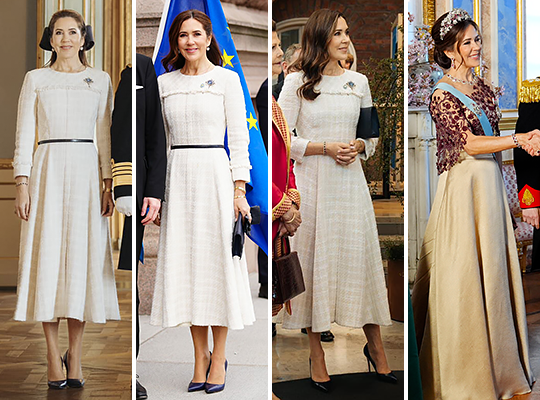






Queen Mary’s Engagements in May 2024:
02/05: Presentation of the Crown Princess Mary Scholarship
02/05: Official Start of Summer Cruise on Royal Yacht Dannebrog - Helsingør
02/05: Official Welcome at Fredensborg
03/05: Changing of the Guards at Fredensborg
06/05: State Visit to Sweden - Official Welcome, Lunch
06/05: State Visit to Sweden - Meeting with Parliament Speaker, Meeting with Prime Minister
06/05: State Visit to Sweden - Royal Institute of Technology
06/05: State Visit to Sweden - Gala Dinner
07/05: State Visit to Sweden - Prince Eugen's Waldemarsudde
07/05: State Visit to Sweden - Lunch at Stockholm City Hall
07/05: State Visit to Sweden - Forskaren Life Science Centre
07/05: State Visit to Sweden - Nordic Museum & Tree-planting
07/05: State Visit to Sweden - Return Event on Dannebrog, Official Farewell
14/05: State Visit to Norway - Official Welcome, Arrival at Royal Palace
14/05: State Visit to Norway - Wreath laying at the National Monument
14/05: State Visit to Norway - Visit to the Norwegian Parliaement, Meeting with President of the Parliament
14/05: State Visit to Norway - Oslo Science City and MiNaLab
14/05: State Visit to Norway - Gala Dinner
15/05: State Visit to Norway - Østmarka National Park
15/05: State Visit to Norway - Meeting with Prime Minister, Jonas Gahr Støre
15/05: State Visit to Norway - The Government's Lunch at Akershus Castle
15/05: State Visit to Norway - Architecture walk on the waterfront in Oslo
15/05: State Visit to Norway - Return Event on Dannebrog
16/05: Receiving UNHCR's High Commissioner, Filippo Grandi
20/05: Royal Run 2024
22/05: Global Fashion Summit
26/05: The King's Birthday Balcony Appearance
30/05: Mary Foundation Annual Board Meeting
30/05: Léonie Sonning Music Award
41 notes
·
View notes
Text
Durant l’été 2015, l’organisation Etat islamique (EI) met en scène la démolition de deux des principaux temples du site de Palmyre, dans le centre de la Syrie, suscitant une vague sans précédent de condamnations dans le monde entier. Irina Bokova, directrice générale de l’Organisation des Nations unies pour l’éducation, la science et la culture (Unesco), dénonce alors « un crime intolérable contre la civilisation » qui « n’effacera jamais 4 500 ans d’histoire ».
La communauté internationale n’avait pourtant pas exprimé, durant les quatre années précédentes, une indignation comparable face aux ravages infligés par le régime de Bachar Al-Assad à l’inestimable patrimoine de la Syrie : la vieille ville d’Alep avait été défigurée, le centre historique de Homs n’était plus que ruines, le site romain d’Apamée était livré aux pillards et même Palmyre avait déjà souffert des exactions de la soldatesque, quoique dans des proportions bien moindres que sous le joug djihadiste. Ces destructions n’étaient en effet pas perçues comme une agression spécifique, mais plutôt comme une conséquence de la brutale répression par la dictature syrienne de toute forme d’opposition. Cette confusion était entretenue par le fait que Bachar Al-Assad et ses partisans, à la différence de l’EI, ne revendiquaient pas de telles destructions, perçues comme les dégâts collatéraux d’une campagne qualifiée d’« antiterroriste ».
C’est le même registre qui permet à l’armée israélienne d’atténuer l’impact des coups portés au patrimoine de Gaza, et ce en l’inscrivant dans l’offensive censée, depuis un an, conduire à la « victoire totale » contre le Hamas. On sait que cette offensive se déroule loin du regard de la presse étrangère, interdite d’accès à Gaza, et qu’elle a déjà causé la mort de près de 2 % de la population locale, ainsi que la destruction de tout ou partie de deux tiers des immeubles.
La guerre contre le patrimoine
Une telle saignée n’a pu être opérée qu’en réduisant l’enclave palestinienne à n’être qu’un bastion des islamistes palestiniens, occultant par là même son histoire plurimillénaire. L’oasis de Gaza a néanmoins été depuis la plus haute Antiquité un carrefour d’échanges entre l’Asie et l’Afrique, convoité par tous les empires qui voulaient, depuis le Levant, s’emparer de l’Egypte, et inversement. Dès la fin du IIe millénaire avant notre ère, Gaza constitue, avec quatre autres cités, aujourd’hui situées en territoire israélien, une fédération dénommée Philistie, du fait du peuple philistin qui la constitue (c’est en écho de cette Philistie que, des siècles plus tard, les Romains appelleront « Palestine » la province couvrant le sud du littoral levantin).
L’armée israélienne, qui occupe la bande de Gaza de 1967 à 2005, est bien consciente de la richesse du patrimoine de l’enclave palestinienne. Moshe Dayan, ministre de la défense de 1967 à 1974, organise même des fouilles plus ou moins sauvages pour enrichir sa collection personnelle. C’est ainsi qu’un extraordinaire ensemble de sarcophages anthropomorphes, datant des XIVe et XIIIe siècles avant notre ère, est acquis par Moshe Dayan, avant d’être cédé par ses héritiers. Il est désormais exposé à Jérusalem, dans la section archéologique du Musée d’Israël, dont il est l’un des fleurons.
Cette forme de prédation préservait malgré tout les œuvres concernées, alors que les ravages infligés par Israël à l’ensemble du tissu urbain de Gaza, en une année de bombardements, sont d’une ampleur inédite : non seulement les douze universités de l’enclave palestinienne ont toutes été détruites, totalement ou partiellement, mais la majorité des mosquées et des églises du territoire ont aussi subi le même sort, alors que certaines étaient porteuses d’une histoire pluriséculaire. La masse des débris accumulés atteint d’ores et déjà la proportion affolante de 300 kilogrammes par mètre carré.
L’inventaire d’un patrimoine bombardé
Le monde académique, entre autres en France, a multiplié les initiatives face à un tel désastre. C’est ainsi que l’archéologue René Elter a présenté au Louvre, en avril, devant un amphithéâtre comble, les actions de préservation du site byzantin de Saint-Hilarion. Un colloque a été consacré, en septembre, à Paris, au défi de la protection du patrimoine de Gaza, avec l’intervention de spécialistes de l’Ecole biblique et archéologique française de Jérusalem, engagés depuis des décennies sur ce terrain. Et un groupe d’une vingtaine d’universitaires vient, après des mois de travaux préparatoires, de mettre en ligne un « inventaire du patrimoine bombardé » de Gaza. Ce site ne cesse de s’étoffer pour offrir à la fois une cartographie des destructions, une liste de dizaines de monuments sinistrés et une fiche explicative détaillant certains d’entre eux. Des liens ouvrent par ailleurs l’accès aux bases de données pertinentes pour prendre la mesure d’une telle catastrophe.
On apprendra ainsi que l’église Saint-Porphyre, touchée par un bombardement israélien, le 19 octobre 2023, avait déjà été endommagée lors de l’offensive israélienne de l’été 2014. Ce lieu de culte grec orthodoxe, datant dans sa forme actuelle du XIIe siècle, est censé abriter la tombe de l’ancien évêque de Gaza, Porphyre, canonisé pour avoir christianisé la cité au début du Ve siècle.
D’autres fiches sont consacrées à des sites plus contemporains : les cimetières militaires regroupant, à Gaza comme à Deir Al-Balah, les milliers de tombes de soldats du Commonwealth tombés, en 1917-1918, durant la conquête britannique de la Palestine ; le siège de la municipalité de Gaza, installé en 1930 dans un quartier plus proche de la mer ; les cinémas Samir et Nasr, qui ont marqué la vie culturelle de Gaza au milieu du XXe siècle. Un tel inventaire est, à bien des égards, précieux pour apprécier la diversité de l’immense patrimoine de Gaza, au moment même où il est en train de disparaître sous nos yeux, au moins en partie.
Jean-Pierre Filiu (Professeur des universités à Sciences Po)
#article copié en entier car réservé aux abonné-es#palestine#free palestine#zionism#colonialism#racism#israel#genocide#cultural heritage#french#upthebaguette#french side of tumblr#bee tries to talk
14 notes
·
View notes